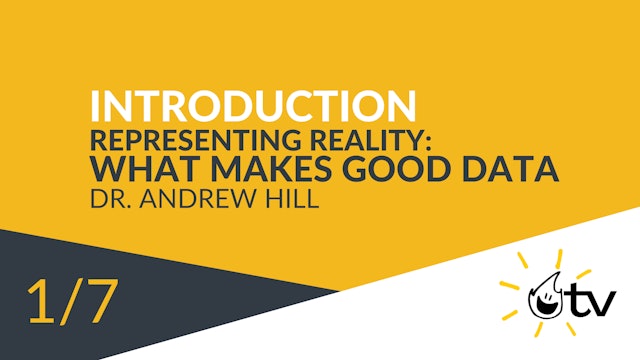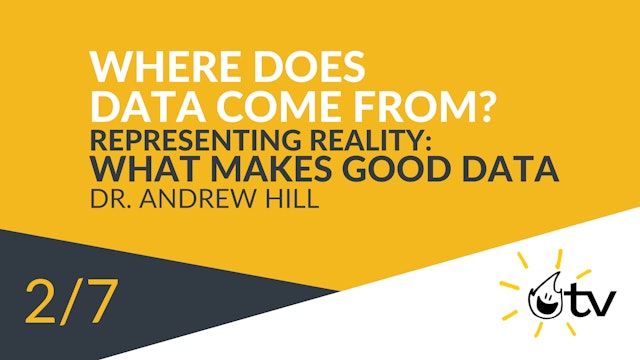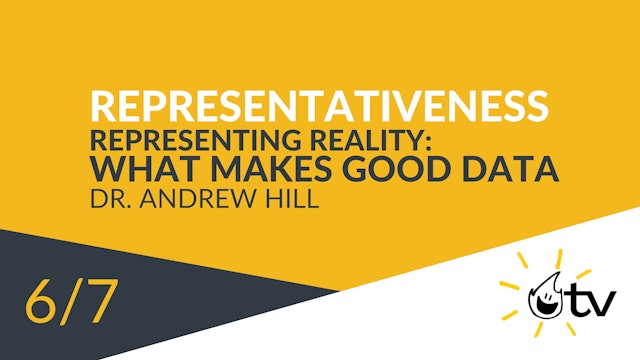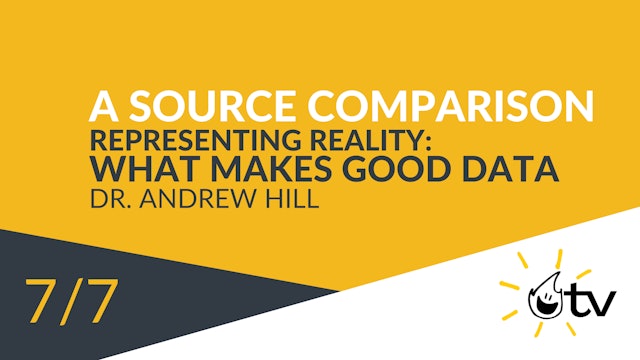Representing Reality: What Makes Good Data
The world is drowning in data, but our understanding of what data is and where it comes from is not keeping up. Good data is essential to effective leadership because it allows us to make well-informed choices about strategy, people, money, and so on. If our data is bad, those choices will probably be bad, as well. In this program, we're going to explore five characteristics of good data that will help you become more effective at leading organizations and teams that are data-informed.
-
Introduction to What Makes Good Data
You probably have goals for yourself and your teams, and some ideas for achieving those goals. Maybe you also have a strategy for your non-profit or business. That's also super important. Goals and strategy are great, but they only work when you know where you are and can keep track of where you'...
-
Where Does Data Come From?
Data doesn't just appear magically. It comes from somewhere. Data may be created from active methods such as experiments, interviews, or surveys, or passive methods such as observation or archival research. Understanding where data comes from is crucial to using it well.
-
Sample vs. Population
What's a sample, and why should I care? Knowing whether your data is from a sample or a population helps you understand what questions to ask. Data from samples is easier to get, but it's also potentially biased. So with samples you want to know whether the sampling methods were good--meaning tha...
-
Good Constructs
Choosing a good data construct is the most important part of getting good data. The construct is the thing we choose to measure. Hopefully, a construct is a good match for the thing we want to know. But sometimes it isn't. What makes a good construct?
-
Accuracy
What's the difference between accuracy and precision? They are not the same, and the difference is important. "Accurate" data gives an impression that closely matches the real thing it is measuring. "Precise" data is measured in a way that gives highly specific measures. For example, if you measu...
-
Representativeness
How well does your data match the reality of the the thing you're trying to measure? "Representative" data can be incredibly powerful, because it means your sample is a good match to the reality you are trying to understand. That allows you to analyze the data with a lot more confidence. Ask ques...
-
A Source for Comparison
We often prefer to have consistency in our data, but data without variation in crucial measures doesn't tell us anything. For example, if everyone in your office gets the same performance score (4 out of 5), the score will have no value in terms of how it explains actual work performance. In orde...
-
Andrew Hill Bio
745 KB
Before co-founding BurnBright, Andrew was a professor at the U.S. Army War College, where he taught senior national security professionals. As the War College's first Chair of Strategic Leadership, Andrew's research focused on connecting people, strategy, and innovation. He has a doctorate from H...










